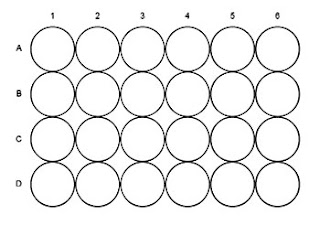Reflections(recap):-
Purification:
- Purification is a process of separating a mixture into pure substances.
- Compounds are separated by chemical means while mixture are separated by physical means.
- There are many methods to purify.
- Examples are: Filtration, Decanting, Crystallization, Chromatography, etc.
- Different substances uses different methods of purification.
- For Example: Sublimation is used to purify iodine while Filtration is to purify drinking water.
There are lots of experiments for purification as there are many methods to it. The one i chose is
an uncommon experiment since most of the experiments are water purification. Chromatography
is rarely done in class (I think because we did it only once) and I thought doing chromatography to
candies is quite interesting and fun since i too want to know what is inside our candies.
The Experiment:-
Chromatography of sweets
This type of experiment goes down well with students since it uses well known material normally used as confectionery. The coloured dye coating the surface is removed from M&M’S® of various colours. A spot of each is put on to a piece of chromatography paper and water is allowed to soak up the paper separating out the component dyes. The results show which dye mixtures are used to produce particular colours for the sweets.
Read our standard health & safety guidance
Lesson organisation
Students should have a good basic understanding of chromatography theory and this practical can be a useful introduction to the method of separation. The experiment can be carried out by groups of two or three and takes about 30-40 minutes. Students must be told that the M&M’S® are not to be eaten under any circumstances.
Apparatus and chemicals
Beaker (250 cm3)
Small soft paint brush
Paper clips (preferably plastic coated), 2
Chromatography paper, approximately 20 cm x 10 cm (see note 1)
Pencil
Ruler
A communal hairdryer (optional) (see note 2)
A supply of M&M’S® of various colours (see notes 3 and 4)
Technical notes
1 Whatman chromatography paper works best for this experiment, but, if unavailable, large sheets of ordinary filter paper can be cut up instead.
2 Ensure that the hairdyer has had an electrical safety check.
3 M&M’S® with a variety of about 6 or 7 different colours are required for each group.
4 If M&M’S® are unavailable this experiment can be carried out with liquid food colouring which is readily available from supermarkets. Chromatography of Smarties® is less successful as they use natural food colourings. Peanut M&M’S® should not be used if there are students with peanut allergies.
Procedure
HEALTH & SAFETY: Students must not attempt to eat the M&M’S® or even lick them. They are for laboratory use only.
a Place the piece of chromatography paper on a clean flat surface, with the longer side horizontal and draw a horizontal line in pencil (not biro) about 1.5 cm from the base of the paper.
b Use the dampened paint brush to remove the colour from one of the M&M’S® and paint this colour on the line about 2 cm from one end. Small spots are best.
c Clean the brush in fresh running water and paint the colour of another M&M® on the line about 2 cm from the first spot.
d Repeat this until all the colours are on the paper or until you have reached the other end.
e Use a pencil (not a biro) to write the name of the colour next to the corresponding spot.
f Roll the paper into a cylinder and hold this in place with the paper clips. Try to avoid any overlapping of the paper when you make the cylinder.
g Put water into the beaker up to depth of about 1 cm.
h Lower the paper cylinder into the beaker of water thus allowing the water to rise up the paper. Ensure that the water is below the level of the spots. Try to avoid moving the paper cylinder about once it is in position.
i When the water approaches the top of the paper cylinder remove it from the water. Mark with a pencil the level of the water at the top of the filter paper.

j Allow the paper cylinder to dry, perhaps by using a hairdryer if available or by clamping it and leaving it to dry overnight.
k Unravel the paper cylinder and examine it carefully.
http://www.practicalchemistry.org/experiments/introductory/mixtures-and-separations/chromatography-of-sweets,194,EX.html
Daily Application of Chromatography:
There are lots of usage of chromatography in real life such as traces of waste oils and pesticides
in the ground or DDTs in groundwater. But, chromatography is widely used in controlling the food quality of the food industry.
http://science.jrank.org/pages/1464/Chromatography-Industrial-applications-chromatography.html



































 Now adjust the microscope slightly until you can see very bright specks. The particles of graphite (or smoke) scatter (reflect) the light shining on them and so appear as bright points of light darting about in a random or erratic motion. Note that the graphite (or smoke) particles are much larger than the water (or air) molecules. The particles can be seen by the light they scatter but the molecules themselves are too small to be seen.
Now adjust the microscope slightly until you can see very bright specks. The particles of graphite (or smoke) scatter (reflect) the light shining on them and so appear as bright points of light darting about in a random or erratic motion. Note that the graphite (or smoke) particles are much larger than the water (or air) molecules. The particles can be seen by the light they scatter but the molecules themselves are too small to be seen. Brownian motion
Brownian motion